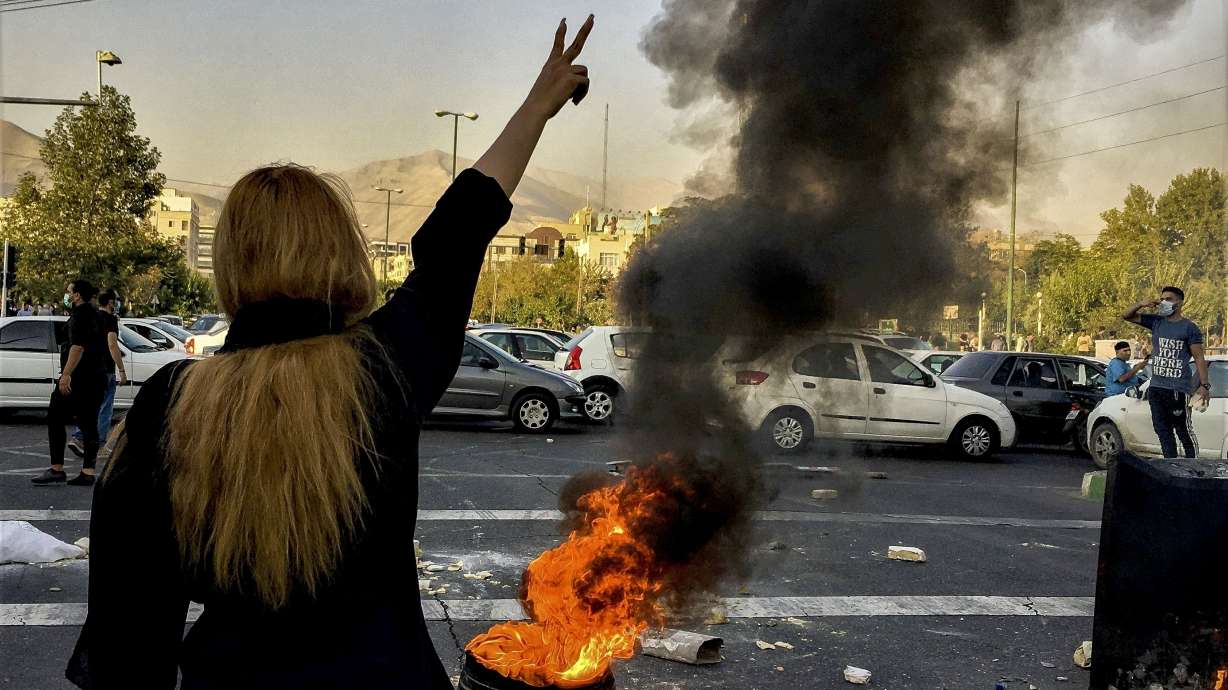Estimated read time: 3-4 minutes
This archived news story is available only for your personal, non-commercial use. Information in the story may be outdated or superseded by additional information. Reading or replaying the story in its archived form does not constitute a republication of the story.
SALT LAKE CITY — Just weeks before 22-year-old Mahsa Amini died while in police custody after being arrested for failing to wear a hijab in public, an Iranian official announced the country's law enforcement agencies would use facial recognition software to identify women who fail to follow the strict dress rule.
Amini, a Turkish citizen, was detained by police while visiting Tehran in September. Her still-unexplained death has spurred widespread protests against the country's theocratic government and its hijab requirements which have been in place since the 1970s. Iranian police have responded with brutal crackdowns on the gatherings resulting in almost 20,000 arrests and hundreds of deaths, according to multiple reports.
Now mounting evidence suggests that facial recognition software, used in conjunction with surveillance video cameras, is being used by Iranian authorities to identify, and prosecute, women who are choosing not to wear the hijab covering when they're in public.
Iran issued a surveillance decree last summer
In early September, the Guardian reported the Iranian government's announcement of plans to use facial recognition technology on public transportation to identify women who are not complying with hijab laws.
The secretary of Iran's Headquarters for Promoting Virtue and Preventing Vice, Mohammad Saleh Hashemi Golpayegani, announced in an interview that the government was planning to use surveillance technology against women in public places following a new decree signed by the country's hardline president, Ebrahim Raisi, on restricting women's clothing, per the Guardian.
"The Iranian government has long played with the idea of using facial recognition to identify people who violate the law," Azadeh Akbari, a researcher at the University of Twente, in the Netherlands, told the Guardian. "The regime combines violent 'old-fashioned' forms of totalitarian control dressed up in new technologies."
Evidence suggests Iran uses facial recognition software
Mahsa Alimardani, who researches freedom of expression in Iran at the University of Oxford, has recently heard reports of women in Iran receiving citations in the mail for hijab law violations despite not having had an interaction with a law enforcement officer, according to a report published Tuesday by Wired. Iran's government has spent years building a digital surveillance apparatus, Alimardani says. The country's national identity database, built in 2015, includes biometric data like face scans and is used for national ID cards and to identify people considered dissidents by authorities.
Cathryn Grothe, a research analyst at Freedom House, a U.S. government–backed nonprofit that works on human rights, told Wired she has received reports from people using online platforms to organize in Iran who suspect they were somehow recognized and then targeted by authorities offline. Iran's government has monitored social media to identify opponents of the regime for years, Grothe says, but if government claims about the use of face recognition are true, it's the first instance she knows of a government using the technology to enforce gender-related dress law.
Chinese-made technology helping power Iran's surveillance programs
Wired reports some face recognition in use in Iran today comes from Chinese camera and artificial intelligence company Tiandy. Its dealings in Iran were featured in a December 2021 report from IPVM, a company that tracks the surveillance and security industry.
Tiandy is one of the largest security camera manufacturers in the world, but its sales are largely in China, according to IPVM report author Charles Rollet, and the company appeared to jump at the opportunity to expand into Iran. IPVM found that the Tiandy Iran website at one time listed the Islamic Revolutionary Guard Corps, police, and a government prison labor organization as customers — agencies Rollet describes as "the kind of places that raise red flags from a sanctions or human rights perspective."
Last month, the Biden administration blacklisted Tiandy and officials said the company is also implicated in the repression of Uyghurs in China, per NBC News .
Tiandy has touted its facial recognition software as designed to help Chinese authorities identify Uyghurs or other ethnic minorities, as well as "smart" interrogation tables, NBC News previously reported.
The Commerce Department sanctions against Tiandy restrict U.S. firms from exporting components to the company.









